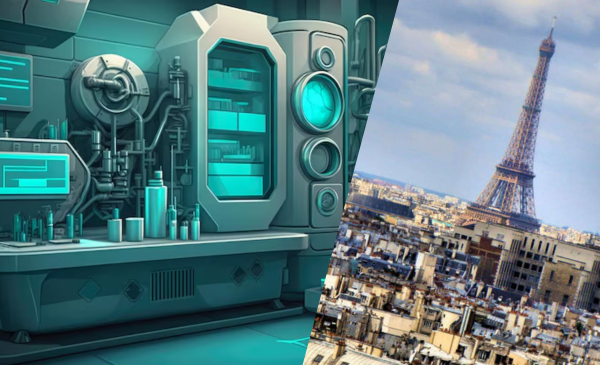Beneath the iconic Louvre in Paris, behind fortified doors, lies a state-of-the-art art laboratory: the Centre for Research and Restoration of Museums of France (C2RMF). Covering nearly 6,000 square meters over three floors, this facility boasts some of the most advanced technology in the world, including a particle accelerator named AGLAE.

The lab is a bustling hub, staffed by a team of 150 specialists such as radiologists, chemists, geologists, metallurgists, archaeologists, and engineers. Each year, they meticulously examine around 1,000 artworks, uncovering details about their materials, construction methods, origins, and ages. Their findings are essential for guiding restoration efforts not only at the C2RMF but also at the Louvre, Versailles, and other museums globally.
Since its inception in 1999, the lab has worked on numerous masterpieces, including the Mona Lisa, the stained-glass windows of Notre-Dame Cathedral, and Napoleon’s saber. Recently, during a rare visit by AFP, the lab was analyzing an 11th-century bronze sculpture of the Hindu god Vishnu from Cambodia. Known as the “Vishnu of Western Mebon,” this Khmer art piece was found at Angkor Wat in 1936 and originally measured about six meters long.
In a machinery-packed room, the straight-line accelerator AGLAE gives off a powerful roar as it bombards artifacts with particles, allowing scientists to determine the precise elemental composition of each object. This data is vital for dating and authenticating these precious works. AGLAE, installed in the 1990s, remains the only particle accelerator in the world dedicated solely to studying artworks.

In another part of the lab, behind thick lead doors, a team of ten specialists was conducting X-ray and 3D scans of the Vishnu statue. They used advanced techniques like X-ray fluorescence and spectrometry to bombard the statue with gamma rays and electrons, revealing its chemical and molecular composition. Team leader David Bourgarit, an archaeo-metallurgical research engineer, described their work as similar to NASA or a scientific police unit, with each member bringing their expertise to uncover the secrets of ancient artifacts.
Bourgarit pointed out small white dots around the statue’s eyebrows, indicating the presence of a metal denser than copper, which requires further analysis. The team also aims to identify the clay used in the statue’s original mold, with traces still present inside. By comparing these clay samples to known earth samples, they hope to pinpoint the exact location where the statue was made.
The insights gained from these analyses are crucial for informing restoration efforts within the C2RMF, as well as for projects at the Louvre, Versailles, and other institutions worldwide. The C2RMF continues to push the boundaries of art restoration and conservation, preserving the world’s cultural heritage with cutting-edge technology and a dedicated team of experts. Hidden beneath Paris, this high-tech lab remains at the forefront of scientific advancements in the art world.

Subtly charming pop culture geek. Amateur analyst. Freelance tv buff. Coffee lover